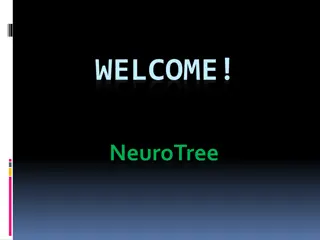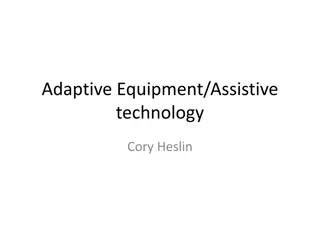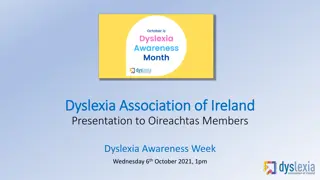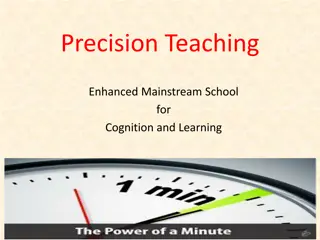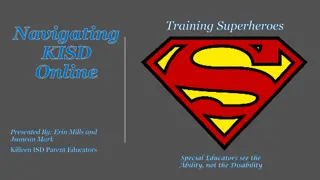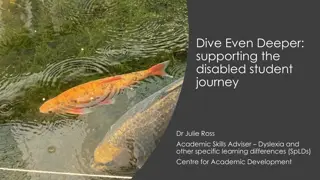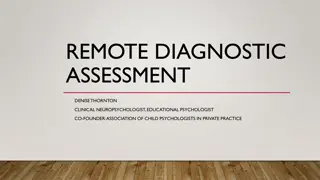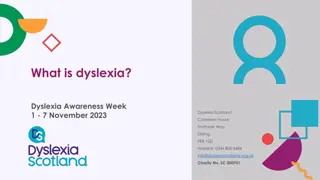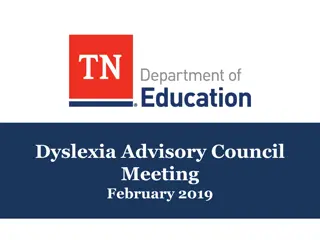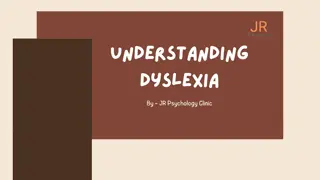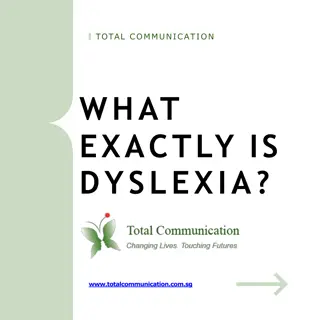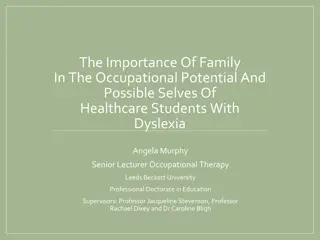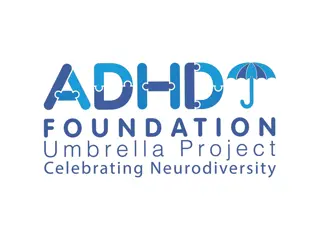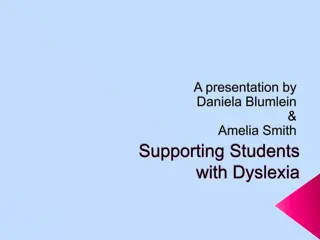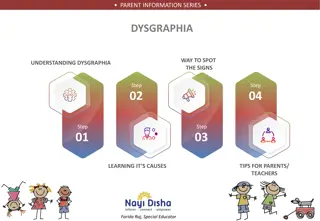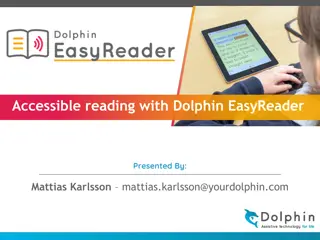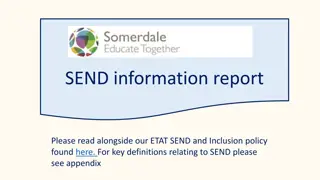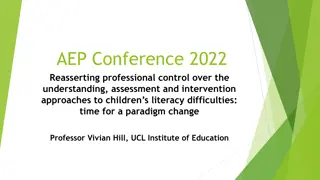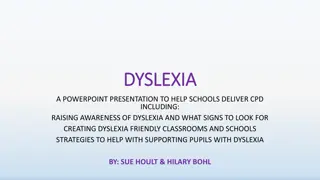Understanding Dysgraphia, Dyslexia, and OWLLD
Dysgraphia, dyslexia, and oral and written language learning disability (OWLLD) are distinct learning challenges affecting different areas of language processing. Dysgraphia primarily impacts spelling and handwriting due to motor memory and visual spelling issues. Dyslexia involves difficulties in phonological systems, affecting reading, spelling, and fluency. OWLLD encompasses decoding, word recognition, spelling, and language skills, impacting reading comprehension and writing abilities. Various tests and assessments are used to evaluate these conditions, highlighting the importance of early detection and tailored interventions.
Download Presentation

Please find below an Image/Link to download the presentation.
The content on the website is provided AS IS for your information and personal use only. It may not be sold, licensed, or shared on other websites without obtaining consent from the author. Download presentation by click this link. If you encounter any issues during the download, it is possible that the publisher has removed the file from their server.
E N D
Presentation Transcript
Dysgraphia, Dyslexia, & O&W LLD Revised from: Berninger, Virginia; October 27, 2010 :Symposium on Working Memory. International Dyslexia Association Center, Phoenix, AZ DYSGRAPHIA: Primary area of difficulty in the orthographic system. Problems with motor memory & visual spelling patterns; may read well; poor spelling & handwriting; letter reversals; difficulty learning sight words; difficulty spelling short, abstract words; homophones. Poor writing skills. DYSLEXIA: Primary area of difficulty in the phonological system but may have orthographic weaknesses as well. Problems with word-level reading, spelling, fluency. Reading comprehension is reduced due to poor decoding & likely lower than oral language skills might predict. Poor writing skills. ORAL AND WRITTEN LANGUAGE LEARNING DISABILITY (OWLLD): This learner has difficulty decoding, recognizing words, spelling, and writing. In addition, has reduced vocabulary, grammar, & other language skills, impacting reading comprehension & written formulation. Nonverbal intelligence may be high. DYSGRAPHIA DYSLEXIA ORAL & WRITTEN LANGUAGE LEARNING DISABILITY
Child NeuroBehavioral Center for Health & Wellness, PC Maria E. Gangarosa-Emerson, PhD & Associates Phone (706) 447-8700 / Fax (706) 447-8701 302 Baston Road Augusta, Georgia 30907 APPENDIX /PSYCHOMETRIC SUMMARY ACRONYM KEY INTELLIGENCE TESTS WISC-IV / V WASI-II Leiter-R LANGUAGE TESTS PPVT-III / IV Token BNT Animals SCAN-A/C or 3 A/C BDAE Write Sample VISUAL-SPATIAL TESTS VMI Motor Coordin. JLO Trails A & B So Cal R/L MEMORY TESTS WRAML-2 EXECUTIVE TESTS WCST Stroop ACADEMIC TESTS WRAT-4 / 5 GORT-4 / 5 TOWL-2 / 3 PERSONALITY / BEHAVIOR TESTS BASC CDI RCMAS Sensory Q ASP Q/ASDS Wechsler Intelligence Scale for Children-4th or 5th Edition Wechsler Abbreviated Scale of Intelligence 2nd Edition Leiter International Performance Scale Revised Wechsler Adult Intelligence Scale -3rd or 4th Edition Test of Nonverbal Intelligence-3rd or 4th Edition WAIS-III / IV TONI-3 / 4 Peabody Picture Vocabulary Test-3rd or 4th Edition Token Test from the Multilingual Aphasia Examination Boston Naming Test from the Boston Diagnostic Aphasia Examination (BDAE) Animal Naming Test SCAN-A/C: Test for Auditory Processing Disorders (Revised or 3rd Edition) Writing Sample from the Boston Diagnostic Aphasia Examination (BDAE) MAE Aural Comp COWA Fluency C or TVCF TAPS Multilingual Aphasia Examination Aural Comprehension from the Multilingual Aphasia Examination Controlled Oral Word Association Test Categorical Fluency - Test of Verbal Conceptualization & Fluency Test of Auditory Processing Skills-3 Segmenting & Blending Subtests Beery Developmental Test of Visual-Motor Integration-6th Edition Beery Developmental Test of Motor Coordination-6th Edition Judgment of Line Orientation Trail Making Tests from the Halstead Reitan Battery Right-Left Discrimination from the Southern California Sensory Integration Tests Beery Developmental Test of Visual Perception-6th Edition Clock Face Test Rey Complex Figure Test Copy Test of Visual Perceptual Skills-3rd Edition Visual Percept Clockface Rey TVPS-3 Wide Range Assessment of Memory & Learning-2nd Edition Rey Rey Complex Figure Test Delay Conner s Continuous Performance Test-2nd or 3rd Edition Wisconsin Card Sort Test Stroop Color & Word Naming Test CPT-2 / 3 Wide Range Achievement Test-4th or 5th Edition Gray Oral Reading Test-4th or 5th Edition Test of Oral & Written Language 2nd or 3rd Edition Woodcock Johnson Tests of Achievement-3rd Edition Gray Silent Reading Test Boder Test of Reading & Spelling Patterns WJ III GSRT Boder Behavior Assessment System for Children 1st or 2nd Edition Kovac s Children s Depression Inventory 1st or 2nd Edition Reynold sChildren s Manifest Anxiety Scale 1st or 2nd Edition Sensory Motor Disorder Questionnaire Asperger s Syndrome Diagnostic Scale
Jane Doe 9 yrs.; 3rd Intellectual Functions WISC-V = 100 TONI-4 = 106 WRAT-5 Read=90 Spell=79 Arithm=82 WJ-WS=81 WF=70 App=92 MF=69 GORT5=62 Rate=60 Acc=60 Comp=75 GSRT=71 TOWL3=83 Language Functions Visual-Spatial-Motor Functions WISC-V: Visual Spatial=108 Proc Speed = 65 VMI=84 Percept=111 Motor=91 JLO=113 So Cal: R/L=115 Clock Face=36 Trails A=104 Trails B=100 TVPS-3 Mem = 85 EXP: WISC-V Verbal Comp=106 COWA=90 An Nam= 109 BNT=106 / 113 REC: MAE Token=98 / Aural=93 Auditory Process: SCAN-C=83 FW=95 AFG=75 CW=90 CS=90 Executive Functions (Attn, Speed & Plan) CPT = Inattention WISC-V Process Speed=77 COWA=90 AN=109 WRAML N/L=105 FW=95 Clock=36 Trails 104/100 Verbal Memory WRAML-2 Story=110 Digit=95 VL=90 N/L=95 Sent=105 Ari=105 N/L=105 Visual Memory WRAML-2 Picture Mem=105 Design Mem=85 Finger Windows=95 WISC-V
Jane Doe DOB: 11/24/09 CA: 9-1 Neuropsych Eval: 1/25/19 Speech/Lang Eval: 1/23/19 Phonological and Orthographic skills for word recognition, reading fluency, spelling, phonics WORD IDENTIFICATION Orthographic System C- A- T (Visual System Underlying Writing & Spelling) TOC Orthographic Processing Conventions 81 Spelling Speed 80 Spelling Accuracy 67 Total Orthographic Ability 70 Boder Spelling SS = 68 60%/30% Phonological System /k/ /a/ /t/ Phonological Awareness 100 SLOW Segmenting Nonwords 80 Phonological Memory 107 Rapid Symbolic Naming (RAN) 76 SCAN3-C 83: AFG 75 PAT-2 DECODING NONWORDS 91, SLOW CTOPP Auditory Processing Disorder Motor Dysgraphia Language System Receptive: WISC-V Verbal Comp 106 MAE Token Test (directions) 93 MAE Aural Comp. 98 Expressive: BNT Picture Vocabulary 106/113 Verbal Naming Fluency: COWA 90 Animal Naming 42 Food Naming 95 HISTORY Family hx of reading problems Early language delays IMPRESSION Deficits in phonological & Orthographic Systems, including PHONOLOGICAL AWARENESS (accurate but slow), RAPID AUTOMATIZED NAMING, Difficulty with spelling patterns. DX: Mixed Phonological & Orthographic Dyslexia COMPREHENSION & USE
NAME______________________ DOB_______________________ CA_________________________ ___________________________ ___________________________ Phonological and Orthographic skills for word recognition, reading fluency, spelling, phonics WORD IDENTIFICATION Orthographic System C- A- T (Visual System specific to letters/graphemes/symbols) ______________________________________ _____________________________________________ _____________________________________________ _____________________________________________ _____________________________________________ _____________________________________________ _____________________________________________ _____________________________________________ __________________________________________ ________________________________ _________________________ Phonological System /k/ /a/ /t/ (Sound System specific to speech) _______________________________________________ _______________________________________________ _______________________________________________ _______________________________________________ _______________________________________________ _______________________________________________ _______________________________________________ _______________________________________________ _______________________________________________ ___________________________________________ __________________________________ _____________________________ _______________________ Language System Receptive: __________________________________ _______________________________________________ _______________________________________________ _______________________________________________ ______________________________________________ Expressive: _____________________________________ _______________________________________________ _______________________________________________ _______________________________________________ ____________________________________________ Other: ________________________________________ _________________________________________ ______________________________________ ________________________________ HISTORY ______________________ ______________________ ______________________ ______________________ ______________________ ______________________ ______________________ ______________________ ______________________ ___________ FINDINGS __________________________________ __________________________________ __________________________________ __________________________________ __________________________________ __________________________________ DIAGNOSES __________________________________ __________________________________ __________________________________ __________________________________ __________________________________ __________________________________ COMPREHENSION





